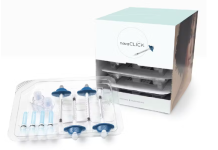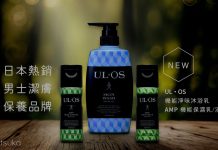Independent nurse prescriber and clinic director Amanda Wilson talks about addressing the ageing neck with non-invasive devices
There is an ever-growing acceptance of non-surgical interventions for patients, and one area of growing interest is non-surgical rejuvenation of the neck.
While surgical interventions remain the gold-standard treatments for neck ageing, there are a number of non-surgical interventions that may be more popular for patients due to downtime associated with busy schedules, operation anxiety and financial constraints – a few of the common reasons
for not selecting surgical intervention.1
The neck can be a prominent indicator in ageing and is often neglected by patients, leading to changes such as skin laxity, dyspigmentation, rhytides, loss of mandibular contour and excessive skin laxity due to loss of collagen and elastin.2
Mulholland (2014) demonstrated the ideal youthful neck showing an acute cervicomental angle, defined jawline, smooth and bright even skin tone, no rhytids, no platysmal bands, no visible submandibular glands, no hypertrophic masseter muscles and minimal melanin or vascular lesions.3
The anatomy of the neck
In aesthetic practice patients will present with a range of concerns relating to the neck which need to be explored fully before deciding on the best treatment options available. An understanding of the anatomy of the neck is important so that structural changes can be discussed with the patient and in order to decide upon the best combination of treatment options available for the individual patient needs. Sykes (2001) described a loss of tone and elastin fibres in the face which causes sagging of the skin and soft tissues; this also includes loss of muscle tone in the anterior neck.
Analysis of patients should include looking at skin quality, bone structure and subcutaneous fat distribution as well as muscles in relation to overlying skin structures. The anatomical structure of the neck can be divided into several layers, these include skin, subcutaneous tissues, the superficial musclo-facial layer and deep subplatysmal structures.
Aesthetic rejuvenation of the neck can involve multi-modality treatments to enhance patient results. Common modalities include minimally-invasive interventions including laser, radiofrequency, high-intensity focused ultrasound (HIFU), energy-based therapy, injectable soft-tissue fillers, neuromodulators and prescriptive skincare as well as ablative and non-ablative technologies.3 Often, a number of treatment modalities will need to be combined in practice to optimise patient results, combining skincare, energy-based devices and injectable treatments.
Looking at the outer layer, the cutaneous layer consists of the epidermis and the dermal tissues. Patients can often present with “necklace lines”; this can be due to extrinsic ageing factors such as sun exposure which the neck itself is often exposed to. The neck can be neglected in patients’ skincare regimes and therefore show enhanced signs of photo-ageing compared with the face.10
The photo-ageing can lead to increased epidermal thickening and breakdown of collagen and elastin as well as damage to melanin which will present as pigmentation. Photo-ageing is a process where UV radiation (sunlight or artificial) gradually causes clinical and histological changes such as dryness, rough texture, irregular pigmentation, telangiectasia, deep creases and fine wrinkles.4 Patients presenting with photoageing can use a number of treatment modalities including prescription skincare regimes, radiofrequency (RF) and fractional radiofrequency microneedling.
Radiofrequency microneedling
Radiofrequency has been used as a thermal energy device which causes heating of the reticular dermis, triggering a healing cascade and leading to collagen formation. The aim of the technology is to heat the tissues to around 40 to 45 degrees.6 Recent devices have combined the use of radiofrequency and microneedling to allow for heat to be added at controlled depths and multiple studies have shown dermal remodelling in patients by ten weeks post-procedure with increased reticular dermal volume, hyaluronic acid and elastin content.8
One study by Serdar et al (2019) compared a cohort of 333 patients treated with either Er: YAG laser or fractional radiofrequency microneedling. Images were then double blinded and evaluated by two dermatologists. There were some advantages to each treatment, with the laser showing more favourable results for the periorbital area, whereas the fractional radiofrequency microneedling was more effective for perioral, nasolabial and jawline areas.
Both modalities did in fact show significant improvement in skin wrinkles and therefore these are both popular modalities for skin improvement in the neck.5 An advantage of RF treatments is that unlike laser, it is chromophore independent and therefore has a better safety profile for all skin types in terms of pigmentation changes.7 There are many types of RF, including monopolar, bipolar, fractional and multipolar energies.
Microneedling alone
In comparison, non-energy-based devices such as microneedling induce dermal collagen formation and resurface the skin through an inflammatory cascade. Local injury releases growth factors and stimulates collagen and elastin fibre production as well as angiogenesis. A number of studies have looked at the use of microneedling for improvement in neck texture and skin quality for patients.6,7,11
HIFU
HIFU technologies have also been used for skin rejuvenation, first by Gliklich et al (2007). Prior to this, HIFU had a number of uses outside of the field of aesthetics. It works in a similar way to light passing through a lens; the ultrasound radiation generates a thermal coagulation point at a controlled depth.
These can target the superficial, deep dermis, the superficial muscloaponeurotic system (SMAS) layer or platysma muscle layer and work by inducing a focal energy lesion at 60 degrees with no damage to the surrounding tissues.9
It is the healing process which induces skin tightening through the generation of elastin, collagen and dermal tightening. It can be an effective treatment for patients who may be unable or contraindicated for surgical interventions and again, it is not chromophore specific so can be used on darker skin types with lower risk. Review of the literature showed multiple treatment modalities for non-invasive and minimally-invasive procedures. While multiple treatment modalities exist for treatment of the ageing neck, there is little evidence on combination of these treatment options.
Although HIFU may be considered a satisfactory, simple, reproducible, rapid, and safe procedure for neck rejuvenation, there is a need for larger-scale studies to show efficacy as existing studies do not have a high power and therefore further research is needed.
In practice, a combination approach using skincare, devices and injectable treatment modalities has been shown to be most effective for patient outcomes, however there is little literature on safety and efficacy of combining these procedures.

Image: Before (left) and after (right) an INTRAcel RF microneedling treatment using a combination of monopolar and bipolar mode to treat neck rhytids and scarring on submental region. Two passes were made – first pass: 2.0mm depth, level 6, monopolar mode; second pass: 1.5mm depth, level 5, bipolar mode. Treatment was performed at Aesthetically Everything.
REFERENCES
1. Brobst, R.W., Ferguson, M. and Perkins, S.W., 2014. Noninvasive treatment of the neck. Facial plastic surgery clinics of North America, 22(2), pp.191-202.
2. DiBernardo, B.E., 2013. The aging neck: a diagnostic approach to surgical and nonsurgical options. Journal of Cosmetic and Laser Therapy, 15(2), pp.56-64.
3. Mulholland, R.S., 2014. Nonexcisional, minimally invasive rejuvenation of the neck. Clinics in plastic surgery, 41(1), pp.11-31.
4. Rijken, F. and Bruijnzeel, P.L., 2009, August. The pathogenesis of photoaging: the role of neutrophils and neutrophil-derived enzymes. In Journal of Investigative Dermatology Symposium Proceedings (Vol. 14, No. 1, pp. 67-72). Elsevier.
5. Serdar, Z.A. and Tatlıparmak, A., 2019. Comparison of efficacy and safety of fractional radiofrequency and fractional Er: YAG laser in facial and neck wrinkles: Six-year experience with 333 patients. Dermatologic therapy, 32(5), p.e13054.
6. Dayan, E., Chia, C., Burns, A.J. and Theodorou, S., 2019. Adjustable depth fractional radiofrequency combined with bipolar radiofrequency: a minimally invasive combination treatment for skin laxity. Aesthetic surgery journal, 39(Supplement_3), pp.S112-S119.
7. Wamsley, C.E., Kislevitz, M., Barillas, J., Basci, D., Kandagatla, V., Hitchcock, T., Akgul, Y. and Kenkel, J., 2021. A Single-Center Trial to Evaluate the Efficacy and Tolerability of Four Microneedling Treatments on Fine Lines and Wrinkles of Facial and Neck Skin in Subjects With Fitzpatrick Skin Types I-IV: An Objective Assessment Using Non- Invasive Devices and 0.33 mm Microbiopsies. Aesthetic Surgery Journal.
8. Fritz K, Salavastru C. Ways of noninvasive facial skin tightening and fat reduction. Facial Plast Surg. 2016;32(3):276-282.
9. Azuelos, A., SidAhmed-Mezi, M., La Padula, S., Aboud, C., Meningaud, J.P. and Hersant, B., 2019. High-intensity focused ultrasound: a satisfactory noninvasive procedure for neck rejuvenation. Aesthetic surgery journal, 39(8), pp.NP343-NP351.
10. Sykes, J.M., 2001. Rejuvenation of the aging neck. Facial plastic surgery, 17(02), pp.099-108.
11. Fabbrocini, G., De Vita, V., Di Costanzo, L., Pastore, F., Mauriello, M.C., Ambra, M., Annunziata, M.C., di Santolo, M.G., Cameli, N. and Monfrecola, G., 2011. Skin needling in the treatment of the aging neck. Skinmed, 9(6), pp.347-51.






